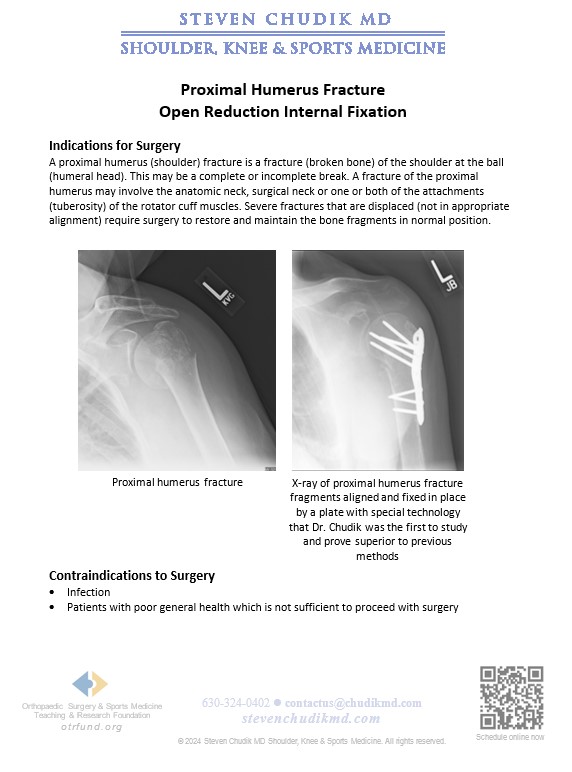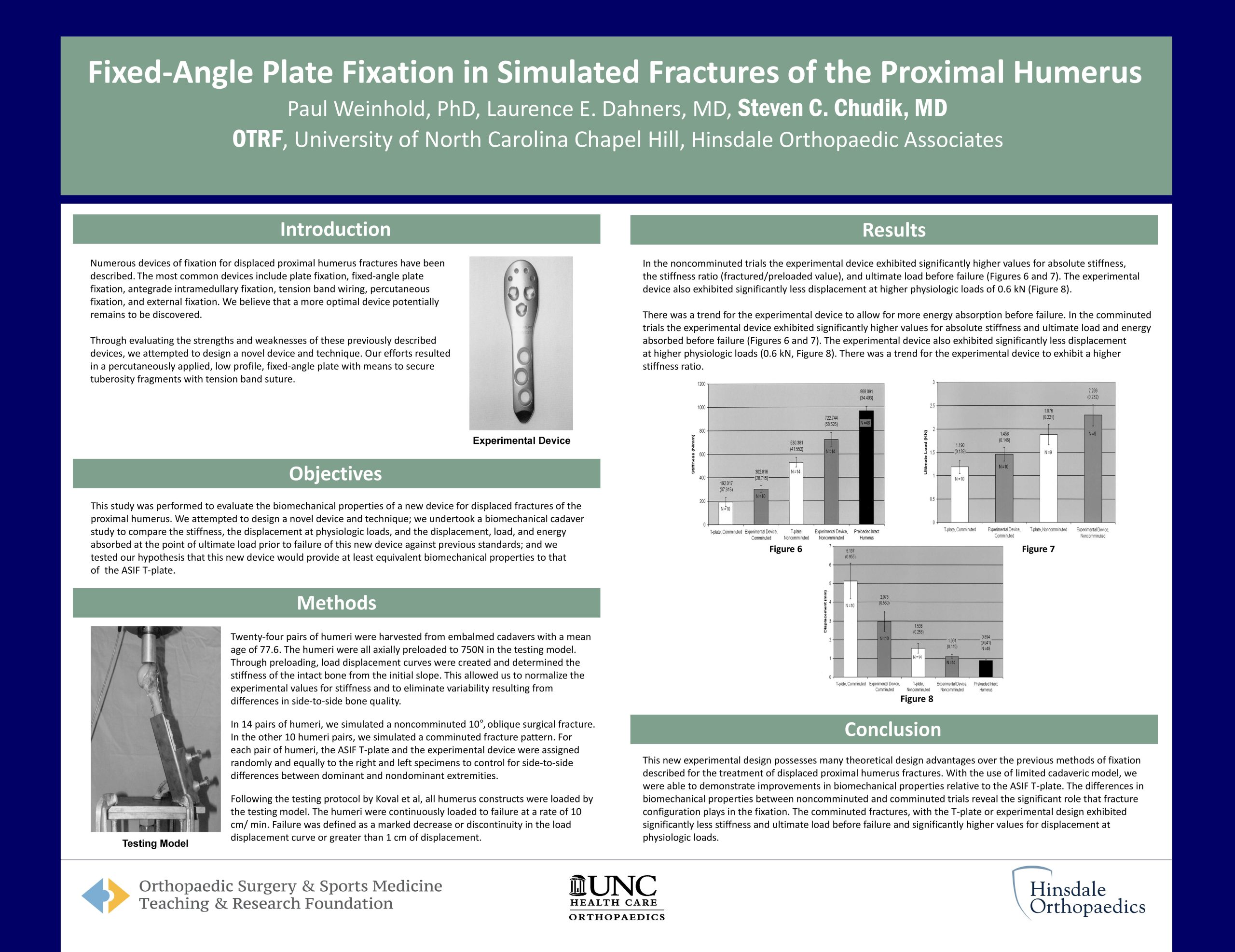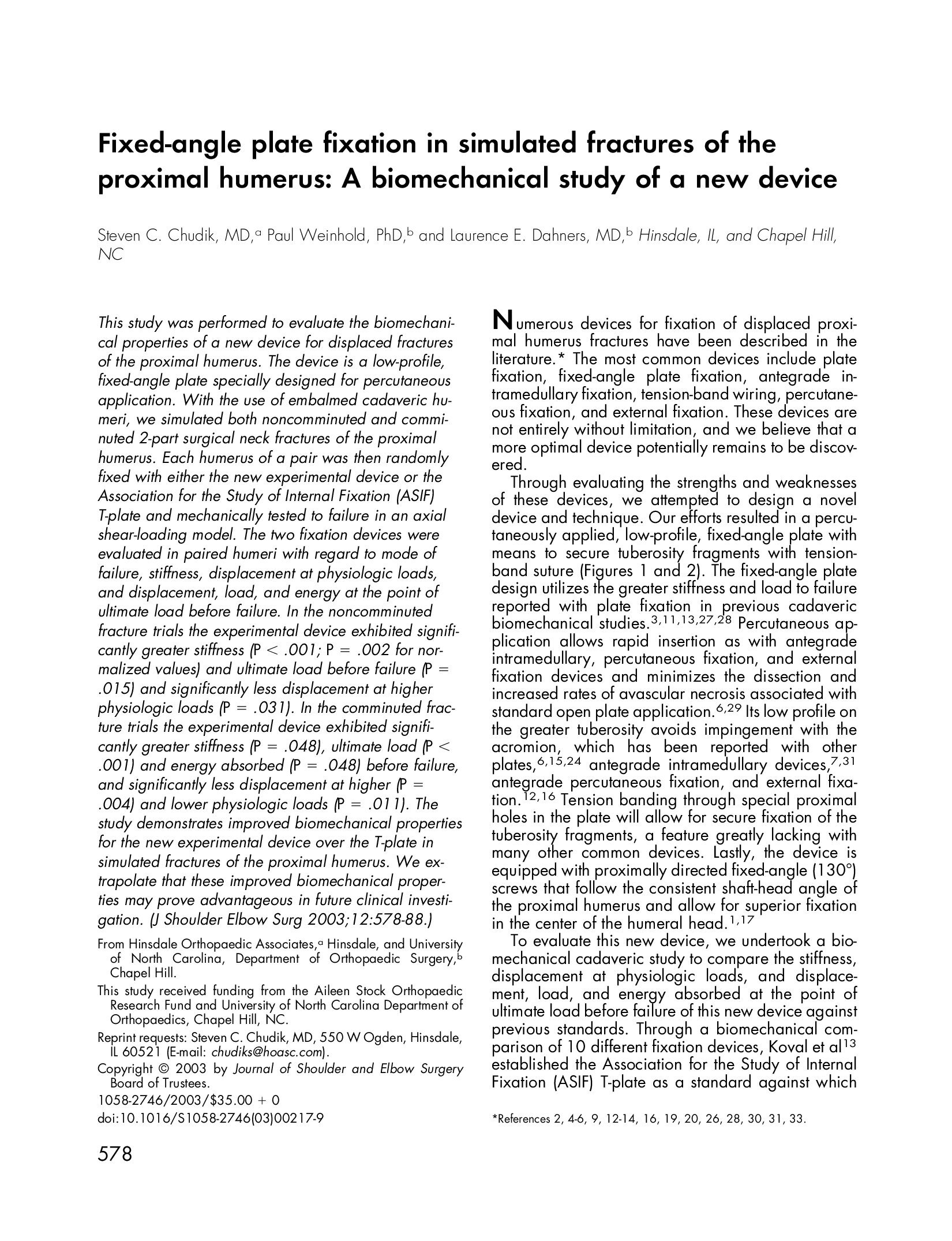 Don’t drink caffeine for an energy boost---climb the stairs
Don’t drink caffeine for an energy boost---climb the stairs
Home / Shoulder / Shoulder Surgery / Fractures / Proximal Humerus Fracture Repair
A proximal humerus (shoulder) fracture is a fracture (broken bone) of the shoulder at the ball
(humeral head). This may be a complete or incomplete break. A fracture of the proximal
humerus may involve the anatomic neck, surgical neck or one or both of the attachments
(tuberosity) of the rotator cuff muscles. Severe fractures, fractures that are displaced (not in
appropriate alignment) require surgery to restore and maintain the bone fragments in normal
position

Numerous devices of fixation for displaced proximal humerus fractures have been described. The most common devices include plate fixation, fixed-angle plate fixation, antegrade intramedullary fixation, tension band wiring, percutaneous fixation, and external fixation. We believe that a more optimal device potentially remains to be discovered. Through evaluating the strengths and weaknesses of these previously described devices, we attempted to design a novel device and technique. Our efforts resulted in a percutaneously applied, low profile, fixed-angle plate with means to secure tuberosity fragments with tension band suture.
Learn More
Published in the Journal Shoulder Elbow Surgery, Vol. 12, Number 6, November/December 2003, pp 578-588
Learn More
Content provided by Dr. Chudik not to be used for diagnosis and treatment. You can receive a proper evaluation and diagnosis by making an appointment with Dr. Chudik
 Competitive running, bicycling back on energetic executive’s schedule between work, volunteering
Competitive running, bicycling back on energetic executive’s schedule between work, volunteering
Dr Steven Chudik founded OTRF in 2007 to keep people active and healthy through unbiased education and research. Click to learn about OTRF’s free programs, educational opportunities and ways to participate with the nonprofit foundation.
1010 Executive Ct, Suite 250
Westmont, Illinois 60559
Phone: 630-324-0402
Fax: 630-920-2382
(New Patients)
550 W Ogden Ave
Hinsdale, IL 60521
Phone: 630-323-6116
Fax: 630-920-2382
4700 Gilbert Ave, Suite 51
Western Springs, Illinois 60558
Phone: 630-324-0402
Fax: 630-920-2382

© 2025 © 2019 Copyright Steven Chudik MD, All Rights Reserved.

